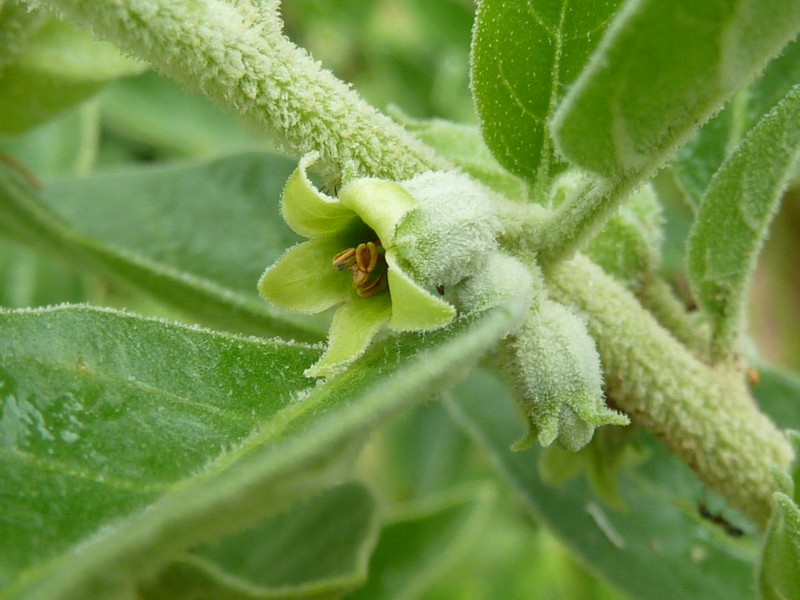Ashwagandha
Withania somnifera (L.) Dunal
Solanaceae
Ashwagandha is a shrub native to Asia where it grows in the arid regions of India, Pakistan or Sri Lanka. It has fruits similar to small tomatoes and a tuberous root, which is the most active part of the plant.
It is one of the main plants of Ayurveda, traditional medicine and very ancient philosophy, which has its roots in India more than 5000 years ago. In the Sanskrit language “ayur” means life, and veda “knowledge”.
This system of health considers living organisms to be composed of five elements (water, earth, fire, air and ether) that combine to give three “biological forces” called doshas: VATA (ether + air), PITTA (Water), KAPHA (water + soil). Each individual is born with a proper proportion of each dosha. To live in good health with this basic constitution, this medicine advocates choosing foods, activities and plants that are the opposite of the dominant doshas.
The plants used in Ayurveda are thus listed according to their action on these biological forces. The ashwagandha is known to appease Vata and Kapha but in excess it will increase Pitta.
Its name in Sanskrit means “who smells like a horse”, not in reference to its perfume but in its power to give the strength of a horse. It is sometimes called Indian ginseng, in view of its immune stimulant properties. It allows the body to better cope with stress, fatigue, or changes in rhythms. This action is coupled with a soothing and enhancing sleep.
It is also an antioxidant, an anti-inflammatory and a stimulant of the memory, which confers to the ashwagandha a global action of fighting against aging. Ashwagandha is used in natural cosmetics, in particular in anti-aging creams because it promotes skin regeneration and protects the skin from aggressions thanks to its antioxidant power.
Recent studies have demonstrated an anti-tumor activity of the plant, in addition to conventional therapies which opens yet other uses to this plant that has been used for hundreds of years!
In the garden of the Herbier du Diois, we grow Ashwagandha in order to study it. It grows there as an annual plant because it cannot stand freezing. It easily produces fruit in one season, which allows us to harvest seeds for the following year. These seeds join our seminum index, which allows exchanges with other botanical gardens.
